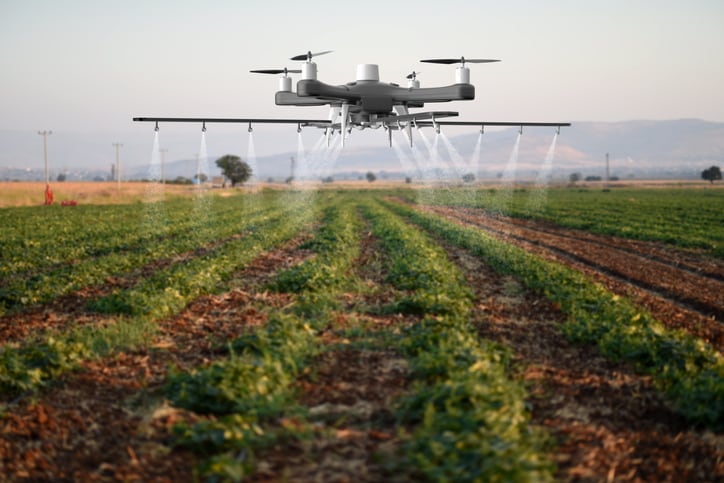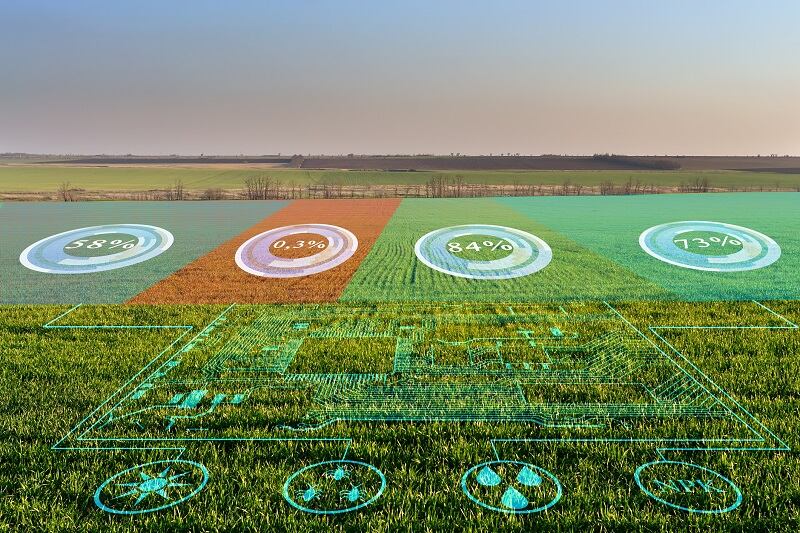Artificial intelligence holds the promise of allowing us to produce more food using fewer resources. Up to now, cost has been the main barrier preventing widespread adoption. But the risk of cyberattack, environmental harm, exploitation of workers and a widening of the gap between commercial and subsistence farmers could all be unintended consequences of harnessing AI’s power to grow our food.
These risks are substantial and must not be ignored, warn researchers.
A new risk analysis, published in the journal Nature Machine Intelligence, cautions that the future use of AI in agriculture comes with significant potential risks for farms, farmers and food security that are poorly understood and under-appreciated.
“The idea of intelligent machines running farms is not science fiction. Large companies are already pioneering the next generation of autonomous ag-bots and decision support systems that will replace humans in the field,” said Dr Asaf Tzachor in the University of Cambridge’s Centre for the Study of Existential Risk (CSER), first author of the paper.
“But so far no-one seems to have asked the question are there any risks associated with a rapid deployment of agricultural AI?,” he added.
Despite the huge promise of AI for improving crop management and agricultural productivity, potential risks must be addressed responsibly, and new technologies properly tested in experimental settings to ensure they are safe and secure against accidental failures.
Cyberattack alarms
First, the research raises the alarm about cyberattacks potentially causing disruption to commercial farms using AI, by poisoning datasets or by shutting down sprayers, autonomous drones, and robotic harvesters.
The 2021 cyberattack on JBS, the world’s largest meat processor, for example, foreshadows potential risks that come from the introduction of digital technologies into agri-food supply chains, the research argued. The meat giant was forced into paying around $11 million in ransom to end the attack on its computer networks, which temporarily shut down some of its operations in Australia, Canada and the US.
Similarly, last year’s ransomware attack by Russian hackers on NEW Cooperative, which provides feed grains for 11 million farm animals in the United States, further emphasizes this emerging cyber-crime landscape.
To guard against this, the researchers suggest that ‘white hat hackers’ -- or ‘ethical’ hackers who use their skills to assist companies in improving their IT security -- help companies uncover any security failings during the development phase, so that systems can be safeguarded against real hackers.
Environmental damage
Food and ag tech is increasingly recognised for its transformative potential, the opportunity it unlocks to develop a more sustainable food system that can do more while also protecting and restoring natural capital.
However, the authors suggest that an AI system programmed only to deliver the best crop yield in the short term might ignore the environmental consequences of achieving this, leading to overuse of fertilisers and soil erosion in the long term.
Over-application of pesticides in pursuit of high yields could poison ecosystems and over-application of nitrogen fertiliser could pollute the soil and surrounding waterways, they argued. The authors suggest involving applied ecologists in the technology design process to ensure these scenarios are avoided.
For instance, if monocultures -- where a single genotype of a plant species is cultivated on extensive lands -- are irrigated, fertilized and inspected by the same suites of algorithms, a model error or poorly calibrated sensors may lead to excessive fertilization and soil microbiome degradation, at the risk of large-scale crop yield failures.
Exploitation of workers
As well as cutting the overall carbon footprint of food production, technologies such as crop breeding, precision agriculture, robotics and automation, vertical farming, and mobile applications also promise to reduce farmers’ dependency on hired labour.
Autonomous machines can improve the working conditions of farmers, relieving them of manual labour, observed the researchers. But without ‘inclusive’ technology design, socioeconomic inequalities that are currently entrenched in global agriculture will remain, warned Tzachor.
“Expert AI farming systems that don’t consider the complexities of labour inputs will ignore, and potentially sustain, the exploitation of disadvantaged communities," he said.
Various ag-bots and advanced machinery, such as drones and sensors, are already used to gather information on crops and support farmers’ decision making: detecting diseases or insufficient irrigation, for example. And self-driving combine harvesters can bring in a crop without the need for a human operator. Such automated systems aim to make farming more efficient, saving labour costs, optimising for production, and minimising loss and waste. This leads to increasing revenues for farmers as well as to greater reliance on agricultural AI.
However, small-scale growers who cultivate the majority of farms worldwide and feed large swaths of the so-called Global South are likely to be excluded from AI-related benefits, Tzachor pointed out. Marginalisation, poor internet penetration rates, and the digital divide might prevent smallholders from using advanced technologies, widening the gaps between commercial and subsistence farmers, he argued.
Partial, biased or irrelevant agricultural data, meanwhile, may hinder ag-tech’s efforts to improve food security.
With an estimated two billion people afflicted by food insecurity, including some 690 million malnourished and 340 million children suffering micronutrient deficiencies, artificial intelligence technologies and precision agriculture promise substantial benefits for food and nutritional security in the face of climate change and a growing global population.
But the people and practices at the centre of Indigenous farming systems are often under-represented in data, despite their contribution to local food security and dietary diversification. For instance, typical agricultural datasets have insufficiently considered polyculture techniques, such as forest farming and silvopasture. These techniques yield an array of food, fodder and fabric products while increasing soil fertility, controlling pests and maintaining agrobiodiversity.
That’s important as the researchers noted “a decades-long focus on staple crops such as wheat, rice and corn has outweighed research efforts concerning crops of crucial importance to the poorest producers and subsistence farmers, including quinoa, cassava and sorghum”.
“AI is being hailed as the way to revolutionise agriculture,” added Dr Seán Ó hÉigeartaigh, Executive Director of CSER and co-author of the new research. “As we deploy this technology on a large scale, we should closely consider potential risks, and aim to mitigate those early on in the technology design.”
Reference
Responsible Artificial Intelligence in Agriculture Requires Systemic Understanding of Risks and Externalities
Nature Machine Intelligence
DOI: 10.1038/s42256-022-00440-4





